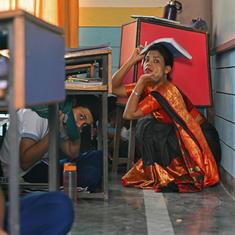The Big Story: Shutdown and restart
On August 7, the Ministry of Communications issued and notified rules that would govern the shutting of all telecom services, including internet services, in India. The rules, as Medianama explains, gives power to officers of a Joint Secretary level or higher, at the State and Central level, to order a shutdown of all telecom services. If the order has not come directly from the Home Secretary, then it is to be reviewed within 24 hours. Effectively, the rules codify a policy that the government has repeatedly used over the last few years: turning off the internet.
The Software Freedom Law Centre’s Internet Shutdowns tracker points to 42 instances of shutdowns in India in 2017. That is nearly as many as in the previous two years combined, and there are still five months left to go in this year. The tracker offers a useful glimpse into how government have increasingly resorted to this tool as an initial response in the face of an emergency, no matter its relative utility or the trampling of fundamental rights that takes place when the internet is shut down.
The new rules add some checks and balances to the state’s power to take away those rights. It does not allow the local District Collector to issue shutdown orders, and mandates a review of shutdowns if they have not been ordered by the Home Secretary herself. But it is not enough of a framework to prevent gross abuse of a policy that allows the government to take away rights.
The shutdown rules are built out of the Telegraph Act, which may not even give the government power to restrict telecom services on a large scale. They came without any public consultation or debate. And although they mandate a review of shut down orders, they do not draw out a clear, transparent method for when shutdowns can be used and whether citizens can examine if the government was justified in suspending the internet – especially if the orders come directly from the State or Central Home Secretary.
Willingly or unwillingly, India is increasingly digitising at a rapid pace. The government attempted to push this along by fiat last year in its demonetisation exercise, and continues to try and push as many services onto the internet as possible. Yet if authorities are simply free to suspend internet services, which more and more may now crucially depend on, the very idea of digitalising the country comes under question. Of course the government has power to suspend rights in emergencies, but its propensity to keep using internet shutdowns suggests it has often been a first-response tool.
Internet shutdowns must be a policy of last-resort for governments, only after they have conceded an inability to maintain law and order. Before they issue such suspension orders, authorities should have to explain their decisions on paper, in a manner that can be challenged by citizens after the fact. And policies like this should not appear out of the blue without public consultations. The Ministry of Communications should go back to the drawing board and this time invite the public to be a part of the creation of rules that will soon affect us all.
Punditry
- Lawrence Liang in the Hindu looks at the privacy judgment and examines how courts have managed to adapt and innovate jurisprudence despite a set of formal, often rigid rules.
- “Ideally, however, India and China should declare a 1,000-year cessation of hostilities,” writes Makarand Paranjape in the Hindustan Times.
- V Anantha Nageswaran in Mint says the Narendra Modi government should look to the Jan Dhan Yojana as a model for economically pragmatic policies that have actually worked.
- “Any success for diplomacy when two armies are locked in an eyeball-to-eyeball confrontation is to be welcomed,” writes Mihir Sharma at NDTV. “Let’s not be immature about it, by jumping up and down and declaring “we won, we won”.
- Puja Mehra in the Hindu questions Urijit Patel’s continued silence on demonetisation, saying the Reserve Bank of India’s reputation continues to be hit without more transparency on the matter.
- “Jaggi Vasudev would do much better if he could use his authority to speak truth to power, and not to peddle confused bromides about consciousness being able to replace morality,” says Pratap Bhanu Mehta in the Indian Express.
Don’t miss
Priyanka Vora writes about how Indian-made motorcycles have become one of the main modes of hospital transport in Uganda.
Health services are uneven throughout Uganda. Some parts of the country have village health teams deployed by the government to help residents. In others, non-government organisations or universities run projects that include community health work. Since public transport is limited and ambulance services are poor, boda bodas are the preferred form of transport for people both in Uganda’s cities and rural areas. Most of the motorcycles that ply on Ugandan roads, including Benic’s, are Indian imports. According to the 2013 Standard Bank Research, 48% of India’s motorcycle exports to Africa in 2012 were bound for Nigeria, followed by Angola and Uganda.
Though boda bodas are not the safest form of travel, especially for pregnant women, they are popular for their efficiency, easy availability and low fares. As such, they have become an intrinsic part of the country’s healthcare system, as even doctors in government health facilities like the clinic in Ntungamo admit.
“Even if someone wants an ambulance, they never get it,” said a health worker who did not wish to be identified. “Either the ambulance is not working or there is no fuel. So people just hop on a boda.”










